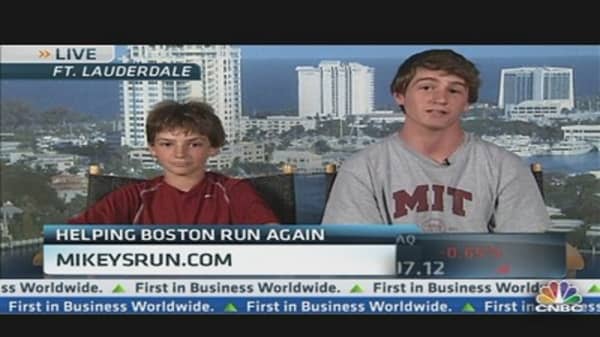Forget T-shirts. If you're in the business of asking people for donations, usual outreach strategies such as hawking candy bars, e-mail blasts and mass mailers are getting some competition.
Nimble charities and philanthropists are instead discovering crowdfunding as an effective, efficient tool for collecting money from the masses. The digital platform is attracting younger do-gooders, in particular, who are tech savvy and would no more write a check for a charity than use snail mail.
"It's just a different game, when you're dealing with this generation," said Dave Boyce, founder of Fundly, a crowdfunding site devoted to helping nonprofits raise money. Philanthropists used Fundly immediately after the Boston bombings in April to collect funds.
"It's a foreign concept for them to pull out a checkbook, find an envelope," Boyce said. "They don't even trust the U.S. mail."
Why Millennials Like Donating Through Crowdfunding
Founded in 2009, Fundly says roughly 77 percent of its users are 44 or younger. And 58 percent are 34 or younger, Boyce said. "They'd much rather do it [donate] online," he said.
Why?
(Read More: 10 Best States for Starting a Business)
Younger do-gooders naturally feel comfortable with technology and online payment systems. Crowdfunding websites, including industry behemoth Kickstarter, allow site users to seek donations (not loans)—usually nominal amounts—from family, friends and strangers. Projects range from artistic ventures such as films to shoring up small-business projects.
To be clear, Fundly supports nonprofits and charities. Meanwhile, Kickstarter is devoted to helping raise money for creative endeavors—not causes, according to Kickstarter guidelines.
Of course it's easy to poke fun at philanthropic millennials—those between the ages of 18 and 34. The generation has been getting a bum rap lately. Human resources professionals say they've seen recent college grads text or take calls during interviews. Doh. (Read More: Texting? Pets? Millennials Are Flunking Job Interviews)
But crowdfunding for causes among millennials is serious business. Fundly's younger users have enabled groups and individuals to raise more than $305 million since the site's launch. Jokes aside about living on mom and dad's couch, younger do-gooders are donating to causes.
Lessons From Sandy
Crowdfunding has only been around a few years. But already the platform is evolving quickly. Hurricane Sandy's aftermath was a mini-watershed moment for nonprofits and how money is raised after tragedies.
"For crowdfunding, Hurricane Sandy was probably the biggest ever," Boyce said.
Nonprofits realized they could immediately harness people's emotion and desire to help—by taking advantage of technology. A Fundly Web page can be up and running in about five minutes to accept credit cards, Boyce said. One organization, Mercury One, has raised more than $19,000 to date through its Boston Explosion Fund campaign on Fundly.
For Hurricane Sandy relief, Mercury One raised $1.9 million through Fundly during the first few weeks following the hurricane last October, and donations are still coming in.
Immediately after the tragedies, volunteers uploaded videos and posts from charity efforts on the ground. And those appeals were very specific and targeted certain locations. Translation: No generic pleas for money here.
One Sandy video featured a female volunteer cooking from a makeshift kitchen, Boyce recalled. "I'm cooking meals for first responders at my portable kitchen. I'll make as many meals as I can afford," she said in the video pitch. That kind of donation pitch is "so tangible," Boyce said.
Fundly's project pages often are interlaced with Facebook and Twitter, enabling causes to quickly spread their plea for donations to where younger do-gooders congregate digitally—their smartphones.
(Read More: The Post-Sandy Quest: Coffee ... And a Shower)





